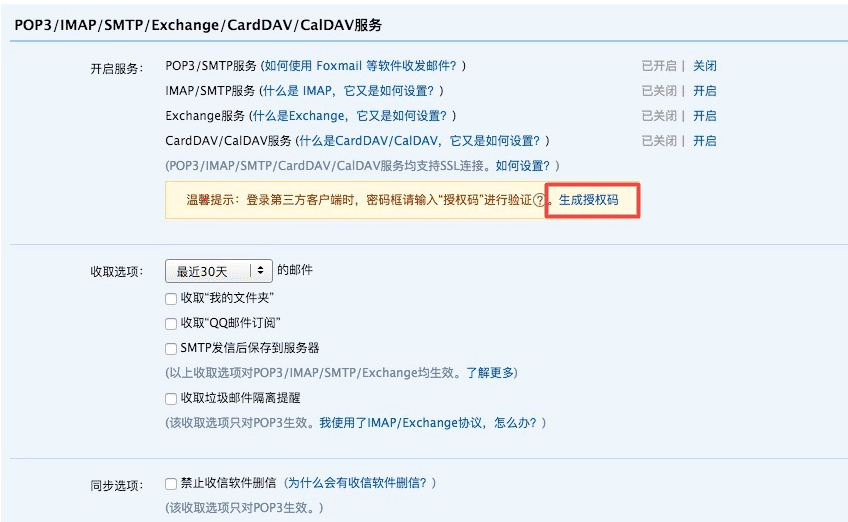python GUI模擬實(shí)現(xiàn)計(jì)算器
python編寫計(jì)算器,供大家參考,具體內(nèi)容如下
(1)計(jì)算器界面如下:

(2)基本滿足了計(jì)算器的所有需求,使用時不可鍵盤輸入,只能鼠標(biāo)點(diǎn)擊左鍵才可執(zhí)行。初始時顯示0.0,每次輸入的內(nèi)容存于D:num.txt(啟動程序時自動創(chuàng)建)
(3)' AC ' 記錄清零返回初始 0.0;' delete ' 刪除上一個輸入內(nèi)容;' +/- ' 將正數(shù)為負(fù)數(shù),負(fù)數(shù)為正數(shù)
(4)對于不同的進(jìn)制數(shù)值系統(tǒng),小數(shù)的精準(zhǔn)值不同。因此計(jì)算機(jī)會出現(xiàn) 0.1+0.2=0.3000000000004 的現(xiàn)象能對數(shù)據(jù)進(jìn)行截?cái)嗵幚恚梢越鉀Q問題,但精度喪失。(此計(jì)算機(jī)沒有進(jìn)行截?cái)嗵幚恚?/p>
import tkinter,osfrom tkinter import *def temp(string):#空白間隔 temp=tkinter.Frame(string,width=20,height=50) temp.pack()flag=0node=0def num_work(): #更新顯示框Lable global flag global node with open('D:num.txt') as f: for length in f: string=length top_work.configure(text=string.strip(’n’)) # 重新設(shè)置標(biāo)簽文本 root.after(500,num_work) # 每隔0.5s調(diào)用函數(shù)num_work自身獲取結(jié)果def num_math_int(num1,num2):#整數(shù)運(yùn)算 try: if num2[0]==’+’: string=int(num1)+int(num2[1:]) elif num2[0]==’-’: string=int(num1)-int(num2[1:]) elif num2[0]==’x’: string=int(num1)*int(num2[1:]) elif num2[0]==’/’: string=int(num1)/int(num2[1:]) with open('D:num.txt',’a’) as f: f.write(’n’+str(string)+’n’) except: with open('D:num.txt',’a’) as f:f.write(’n錯誤’)def num_math_float(num1,num2):#小數(shù)運(yùn)算 try: if num2[0]==’+’: string=float(num1)+float(num2[1:]) elif num2[0]==’-’: string=float(num1)-float(num2[1:]) elif num2[0]==’x’: string=float(num1)*float(num2[1:]) elif num2[0]==’/’: string=float(num1)/float(num2[1:]) if flag==0: with open('D:num.txt',’a’) as f:f.write(’n’+str(string)+’n’) else: with open('D:num.txt',’a’) as f:f.write(’n’+str(string)) except: with open('D:num.txt',’a’) as f:f.write(’n錯誤’)def decimal(num): if num.count(’%’)>0: num=num.replace(’%’,’’) num=num.replace(’n’,’’) if num.isnumeric(): num=str(float(num)/100) else: num=num[0]+str(float(num[1:])/100) return num def work(string):#按鍵對應(yīng)的功能 if string.isnumeric(): with open('D:num.txt','a') as file: file.write(string) else: #讀取文件D:num.txt所有內(nèi)容 lists=[] with open('D:num.txt','r') as file: for length in file:lists.append(length) if string==’AC’: with open('D:num.txt','w') as file:file.write(’0.0n’) elif string==’=’: num1=lists[-2] num2=lists[-1] if num1==’n’:#解決末尾為換行的情況num1=lists[-3] #將百分?jǐn)?shù)小數(shù)化 #出現(xiàn)結(jié)果多0.0000000001 num1=decimal(num1) num2=decimal(num2) try: #判斷兩個數(shù)是整數(shù)還是小數(shù)number=int(num1)number=int(num2[1:])num_math_int(num1,num2)#兩個數(shù)進(jìn)行整數(shù)運(yùn)算 except:num_math_float(num1,num2)#兩個數(shù)進(jìn)行小數(shù)運(yùn)算 elif string==’.’: if lists[-1].count(’.’)==0:#判斷結(jié)尾是否有小數(shù)點(diǎn),沒有寫入否則報(bào)錯with open('D:num.txt','a') as file: file.write(string) else:with open('D:num.txt','a') as file: file.write(’n錯誤’) elif string==’+/-’: if lists[-1].count(’-’)==0:#-+為-if lists[-1].count(’+’)==1: lists[-1]=lists[-1].replace(’+’,’’)lists[-1]=’-’+lists[-1] else: #--為+lists[-1]=lists[-1].replace(’-’,’+’) #更新文件 with open('D:num.txt','w') as file:pass for length in lists:with open('D:num.txt','a') as file: file.write(length) elif string==’delete’: number=lists[-1] lists[-1]=number[0:(len(number)-1)]#刪除一位 #更新文件 with open('D:num.txt','w') as file:pass for length in lists:with open('D:num.txt','a') as file: file.write(length) elif string==’%’: if lists[-1].endswith('%')==False:with open('D:num.txt','a') as file: file.write(string) else:with open('D:num.txt','a') as file: file.write(’n錯誤’) else: with open('D:num.txt','a') as file:file.write(’n’+string) def run():#計(jì)算器顯示界面主體 if os.path.exists('D:num.txt')==False: with open('D:num.txt',’w’) as f: f.write(’0.0n’)global root#定義全局變量root,方便Label更新 root=tkinter.Tk() root.title('計(jì)算器') #x = root.winfo_screenwidth() #獲取當(dāng)前屏幕的寬 #y = root.winfo_screenheight() #獲取當(dāng)前屏幕的高 #print(((x-500)//2),((y-600)//2))#為居中提供的參數(shù) root.geometry(’400x500+760+290’)#主體長400,高500,居中 top=tkinter.Frame(root,width=20,height=50) top.pack() global top_work#定義全局變量root temp(top)#空白間隔 #計(jì)算器顯示框 top_work=tkinter.Label(top,text=’’,justify=’left’,relief=SUNKEN,bd=10,bg=’white’,width=40) top_work.pack(side=’bottom’)#計(jì)算器顯示框(位置居下) num_work() temp(root)#空白間隔 number=tkinter.Frame(root)#成放計(jì)算機(jī)鍵盤的容器 number.pack() #所有按鍵,AC鍵為事例 numberAC=tkinter.Button(number,text='AC',width=10,command=lambda : work(’AC’)).grid(row=0,column=0) #左鍵點(diǎn)擊,執(zhí)行函數(shù)work #按鍵位置(0,0) numberdelete=tkinter.Button(number,text='delete',width=10,command=lambda : work(’delete’)).grid(row=0,column=1) numberzhengfu=tkinter.Button(number,text='+/-',width=10,command=lambda : work(’+/-’)).grid(row=0,column=2) numberchu=tkinter.Button(number,text='/',width=10,command=lambda : work(’/’)).grid(row=0,column=3) tkinter.Button(number,text='7',width=10,command=lambda : work(’7’)).grid(row=1,column=0) tkinter.Button(number,text='8',width=10,command=lambda : work(’8’)).grid(row=1,column=1) tkinter.Button(number,text='9',width=10,command=lambda : work(’9’)).grid(row=1,column=2) tkinter.Button(number,text='x',width=10,command=lambda : work(’x’)).grid(row=1,column=3) tkinter.Button(number,text='4',width=10,command=lambda : work(’4’)).grid(row=2,column=0) tkinter.Button(number,text='5',width=10,command=lambda : work(’5’)).grid(row=2,column=1) tkinter.Button(number,text='6',width=10,command=lambda : work(’6’)).grid(row=2,column=2) tkinter.Button(number,text='-',width=10,command=lambda : work(’-’)).grid(row=2,column=3) tkinter.Button(number,text='1',width=10,command=lambda : work(’1’)).grid(row=3,column=0) tkinter.Button(number,text='2',width=10,command=lambda : work(’2’)).grid(row=3,column=1) tkinter.Button(number,text='3',width=10,command=lambda : work(’3’)).grid(row=3,column=2) tkinter.Button(number,text='+',width=10,command=lambda : work(’+’)).grid(row=3,column=3) tkinter.Button(number,text='%',width=10,command=lambda : work(’%’)).grid(row=4,column=0) tkinter.Button(number,text='0',width=10,command=lambda : work(’0’)).grid(row=4,column=1) tkinter.Button(number,text='.',width=10,command=lambda : work(’.’)).grid(row=4,column=2) tkinter.Button(number,text='=',width=10,command=lambda : work(’=’)).grid(row=4,column=3) root.mainloop()if __name__==’__main__’: run()
以上就是本文的全部內(nèi)容,希望對大家的學(xué)習(xí)有所幫助,也希望大家多多支持好吧啦網(wǎng)。
相關(guān)文章:
1. Python結(jié)合百度語音識別實(shí)現(xiàn)實(shí)時翻譯軟件的實(shí)現(xiàn)2. 教你JS更簡單的獲取表單中數(shù)據(jù)(formdata)3. JavaScript設(shè)計(jì)模式之策略模式實(shí)現(xiàn)原理詳解4. Python基于QQ郵箱實(shí)現(xiàn)SSL發(fā)送5. 測試模式 - XSL教程 - 56. JAVA抽象類及接口使用方法解析7. 如何通過vscode運(yùn)行調(diào)試javascript代碼8. python如何寫個俄羅斯方塊9. 《CSS3實(shí)戰(zhàn)》筆記--漸變設(shè)計(jì)(一)10. python b站視頻下載的五種版本

 網(wǎng)公網(wǎng)安備
網(wǎng)公網(wǎng)安備